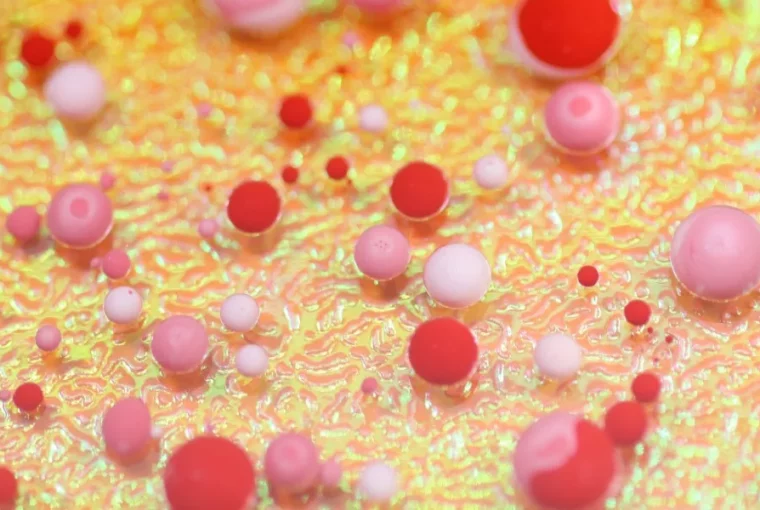From single-celled organisms, a diverse array of complex and highly organized species emerged, ranging from fungi, to plants, and animals. These organisms evolved the capability to work together, forming tissues, organs, and intricate systems that allowed them to adapt and thrive in varying environments. The transition from unicellular to multicellular life created unparalleled opportunities for life to persist and diversified into an incredible range of species that make up the diverse ecosystems we see today.
In this blog post, we delve deep into the emergent properties of multicellular organisms and the implications of their existence for our ecosystem, including the biomechanics of intercellular communication, cellular differentiation, and cellular specialization all with the help of experts from Generation Genius.
1. Understanding The Basics Of Single-Celled Organisms And Their Limitations.
Single-celled organisms, or unicellular organisms, are those that consist of only one cell that carries out all the functions necessary for survival. These organisms can be found in a wide range of environments, from oceans to soil to the human body. However, despite their diversity, single-celled organisms have limitations due to their size and complexity. They are smaller and less complex than multicellular organisms, which means they are limited in their ability to perform certain tasks and adapt to changing environmental conditions.
2. The Evolution Of Multicellularity And The Benefits That It Brings.
Multicellularity refers to the ability of organisms to develop from a single cell into a complex structure consisting of multiple cells working together. It is believed to have first emerged over a billion years ago and has since given rise to a vast array of life forms, including humans. The benefits of multicellularity are manifold. Firstly, it allows organisms to specialize and differentiate their cells for various functions, which increases overall efficiency and adaptability. Secondly, it enables cooperation and communication between cells, enhancing collective problem-solving capabilities.
3. The Various Types Of Multicellular Organisms, From Simple To Complex.
In general, the complexity of multicellular organisms is proportional to the number of cells they contain. At the simplest end of the spectrum are organisms like algae and lichens, which consist of just a few cells working together. Moving up the complexity ladder, we find organisms like sponges and jellyfish, which have multiple types of cells that specialize in different functions but are not organized into distinct organs. More complex still are animals like worms and insects, which have specialized organs for digestion, circulation, and other functions. Finally, at the most complex end of the spectrum are vertebrates like humans, which have highly specialized organs and tissues that work in concert to carry out a wide variety of tasks.
4. The Structure And Function Of Tissues And Organs In Multicellular Life.
The study of multicellular life is a fascinating aspect of biology that seeks to understand the structure and function of tissues and organs in living organisms. At the heart of multicellular life are individual cells that work together in complex ways to form the tissues, organs, and systems that make up the bodies of living organisms. Tissues are groups of similar cells that perform specific functions within an organism, such as the muscle tissue that allows for movement and the nervous tissue that enables communication and coordination. Organs are collections of tissues that work together to carry out specific functions, such as the heart, lungs, and kidneys, which play vital roles in maintaining the health and well-being of an organism.
5. The Role Of Cell Communication And Signaling In Multicellular Organisms.
Cell communication and signaling play a critical role in the existence of multicellular organisms. They allow cells to coordinate their activities and work together efficiently, leading to the formation of tissues, organs, and ultimately, complex organisms. The process of cell communication and signaling involves the transmission of chemical signals between cells, which allow cells to communicate with each other and respond to changes in their environment. The signals can be in the form of hormones, neurotransmitters, or growth factors. Cells can detect signals through specialized receptors on their surface, which are activated by the binding of specific molecules. This leads to a cascade of events inside the cell that eventually results in a response.
6. The Advantages And Disadvantages Of Sexual And Asexual Reproduction In Multicellular Life.
Multicellular organisms can reproduce sexually or asexually. Sexual reproduction involves the fusion of two gametes, typically from two different individuals, to create genetically unique offspring. Asexual reproduction, on the other hand, involves producing genetically identical offspring from a single-parent organism. Both modes of reproduction have advantages and disadvantages depending on the environment and the organism’s characteristics.
One advantage of sexual reproduction is genetic diversity. The combination of genetic material from two individuals results in offspring with unique genetic traits that may be advantageous in changing or unpredictable environments. Sexual reproduction also allows for the evolution of new traits and adaptations over time. However, sexual reproduction can be risky and energetically costly, as finding a mate and producing gametes requires a significant amount of resources and effort.
Asexual reproduction, on the other hand, can be faster and more efficient than sexual reproduction, as it does not require a mate and allows for rapid population growth in favorable conditions. Asexual reproduction is also advantageous for organisms living in stable environments where the characteristics of the parent organism are already well-suited to the environment.
7. The Impact Of Environmental Factors On Multicellular Organisms.
Organisms have evolved complex mechanisms to sense, respond, and adapt to changes in their environment, such as light, temperature, nutrients, pH, chemicals, and physical stresses (e.g., mechanical, osmotic, or oxidative stress). The impact of environmental factors on multicellular life can range from subtle to dramatic, and can affect all levels of biological organization, from cells to tissues, organs, organ systems, and whole organisms. For instance, changes in temperature can affect the fluidity and activity of membrane proteins, the rate of enzymatic reactions, the metabolism and growth rates of cells, and the balance between energy intake and expenditure. Similarly, changes in nutrients can affect the gene expression, signal transduction, differentiation, and proliferation of cells, as well as the size, shape, and function of organs. Some environmental factors can be beneficial, while others can be harmful, depending on the dose, duration, and context.
8. The Significance Of Multicellularity In The Development Of Complex Communities And Ecosystems.
Multicellularity is a phenomenon where multiple cells come together to form a cohesive and functional unit, typically to achieve a specific task or address an environmental challenge. The significance of this feature in the development of complex communities and ecosystems cannot be overstated. Multicellular organisms have been tremendously successful in adapting to a variety of ecological niches, leading to the emergence of diverse and complex ecosystems. Moreover, multicellular life has facilitated the evolution of complex cell types and tissue architectures, which in turn have enabled more complex behaviors, communication, and sensory processing. The emergence of multicellularity has also led to important events in the history of life, such as the Cambrian Explosion, a period of rapid diversification of animal life that gave rise to most of the major animal phyla we see today.
In conclusion, the evolution from single-celled organisms to multicellular lifeforms is a fascinating field of study, and scientists are still uncovering new insights every day. Multicellularity has allowed for the creation of complex ecosystems and the development of unique organisms that would not be possible otherwise. The study of multicellular life is vital not only to better understand our origins but also to explore potential avenues for medical research and applications. As we continue to explore the mysteries of life’s complexity, we will undoubtedly uncover even more surprising discoveries that will reshape our understanding of the world around us.




